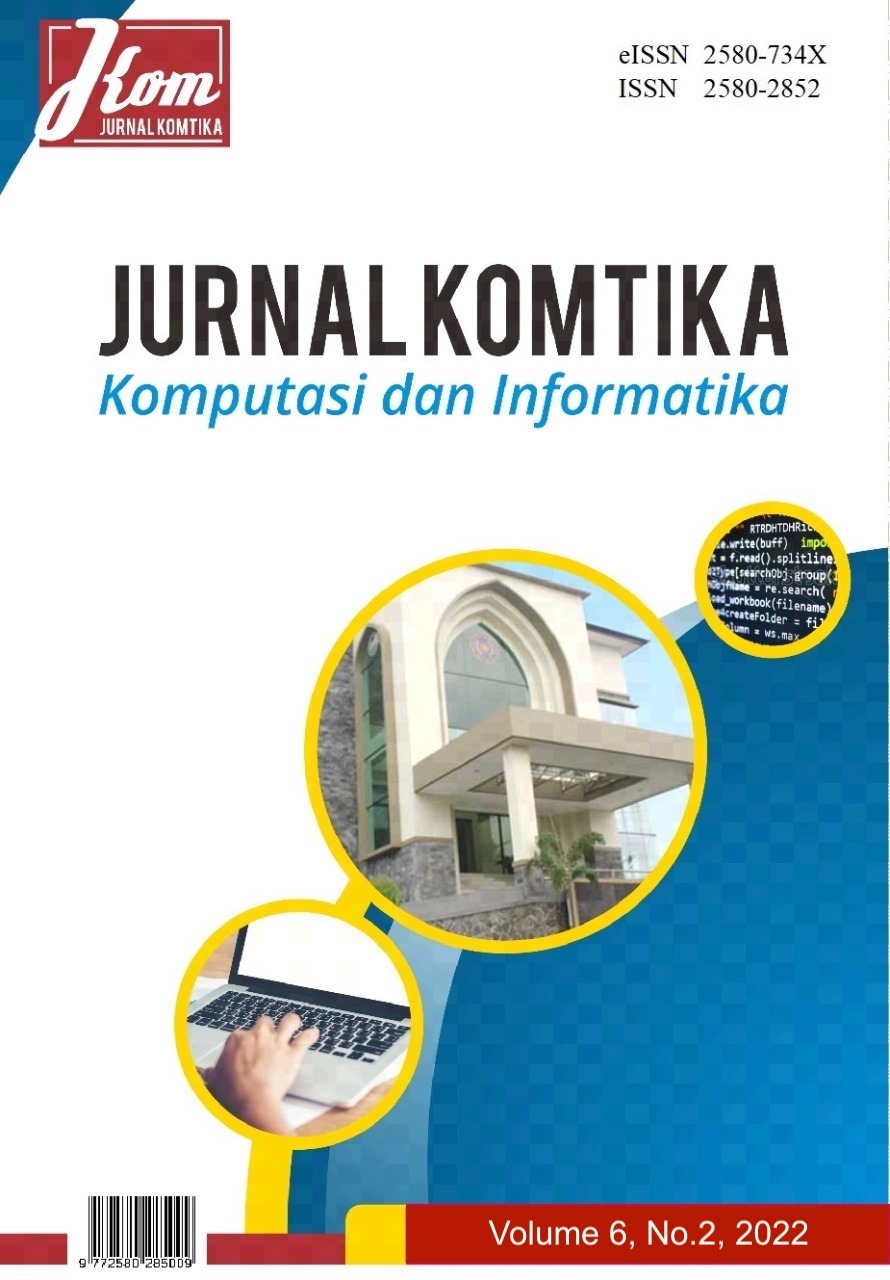Main Article Content
Abstract
Bipolar disorder is one of the world's most common mental health disorders. To find out public sentiment regarding bipolar disorder, sentiment analysis is carried out through social media to analyze positive or negative sentiments with the aim of maintaining positive sentiment towards the problem of bipolar disorder. Twitter is a social media that is often used to exchange information, discuss, and even express emotions. The emotions of Twitter users can be called sentiment. Sentiment analysis is also carried out to see opinions or tendencies towards an opinion. Opinion tendencies can be in the form of positive or negative sentiments. The data used in this study uses the bipolar keyword. There are 2177 tweets data that were successfully obtained in the crawling process using API key access from Twitter developers, after which the data will be processed using preprocessing. The comparison of the presentations obtained is 70.92% expressing a negative opinion and 29.08% expressing a favorable opinion. The analysis results in this study using the nave Bayes algorithm is with an accuracy value of 92.110092%.
Keywords
Article Details

This work is licensed under a Creative Commons Attribution-NonCommercial 4.0 International License.
References
-
[1] UNICEF, On my mind. 2021.
[2] D. I. Sari, Y. F. Wati, and Widiastuti, “Analisis Sentimen Dan Klasifikasi Tweets Berbahasa Indonesia Terhadap Transportasi Umum Mrt Jakarta Menggunakan Naïve Bayes Classifier,” Jurnal Ilmiah Informatika Komputer, vol. 25, no. 1, pp. 64–75, 2020, doi: 10.35760/ik.2020.v25i1.2427.
[3] M. W. A. Putra, Susanti, Erlin, and Herwin, “Analisis Sentimen Dompet Elektronik Pada Twitter Menggunakan Metode Naïve Bayes Classifier,” IT Journal Research and Development, vol. 5, no. 1, pp. 72–86, 2020, doi: 10.25299/itjrd.2020.vol5(1).5159.
[4] H. Herlawati, R. Trias Handayanto, I. Ekawati, K. I. Meutia, J. Asian, and U. Aditiawarman, “Twitter scrapping for profiling education staff,” 2020 5th International Conference on Informatics and Computing, ICIC 2020, no. November, 2020, doi: 10.1109/ICIC50835.2020.9288607.
[5] F. F. Mailo and L. Lazuardi, “Analisis Sentimen Data Twitter Menggunakan Metode Text Mining Tentang Masalah Obesitas di Indonesia,” Journal of Information Systems for Public Health, vol. 4, no. 1, pp. 28–36, 2019.
[6] D. Ayu Wulandari, R. Rohmat Saedudin, R. Andreswari, P. S. Studi, and S. Informasi, “Analisis Sentimen Media Sosial Twitter Terhadap Reaksi Masyarakat Pada Ruu Cipta Kerja Menggunakan Metode Klasifikasi Algoritma Naive Bayes Analysis of Twitter Social Media Sentiment on the Public’S Reaction To the Drafts of Job Creation Law Using the Cla,” vol. 8, no. 5, pp. 9007–9016, 2021.
[7] V. A. Permadi, “Analisis Sentimen Menggunakan Algoritma Naive Bayes Terhadap Review Restoran di Singapura,” Jurnal Buana Informatika, vol. 11, no. 2, p. 140, 2020, doi: 10.24002/jbi.v11i2.3769.
[8] Herlawati, R. T. Handayanto, D. Setiyadi, and E. Retnoningsih, “Corpus Usage for Sentiment Analysis of a Hashtag Twitter,” Proceedings of 2019 4th International Conference on Informatics and Computing, ICIC 2019, no. May 2021, 2019, doi: 10.1109/ICIC47613.2019.8985772.
[9] F. V. Sari and A. Wibowo, “Analisis Sentimen Pelanggan Toko Online Jd.Id Menggunakan Metode Naïve Bayes Classifier Berbasis Konversi Ikon Emosi,” Jurnal SIMETRIS, vol. 10, no. 2, pp. 681–686, 2019.
[10] H. Herlawati, R. T. Handayanto, P. D. Atika, F. N. Khasanah, A. Y. P. Yusuf, and D. Y. Septia, “Analisis Sentimen Pada Situs Google Review dengan Naïve Bayes dan Support Vector Machine,” Jurnal Komtika (Komputasi dan Informatika), vol. 5, no. 2, pp. 153–163, 2021, doi: 10.31603/komtika.v5i2.6280.
[11] A. P. Tirtopangarsa and W. Maharani, “Sentiment Analysis of Depression Detection on Twitter Social Media Users Using the K-Nearest Neighbor Method,” pp. 247–258, 2021.
[12] A. P. Giovani, A. Ardiansyah, T. Haryanti, L. Kurniawati, and W. Gata, “Analisis Sentimen Aplikasi Ruang Guru Di Twitter Menggunakan Algoritma Klasifikasi,” Jurnal Teknoinfo, vol. 14, no. 2, pp. 116–124, 2020, doi: 10.33365/jti.v14i2.679.
[13] Fadila, W. I. Rahayu, and M. H. K. Saputra, Penerapan Metode Naive Bayes dan Skala Likert Pada Aplikasi Prediksi Kelulusan Mahasiswa. Kreatif, 2020.

